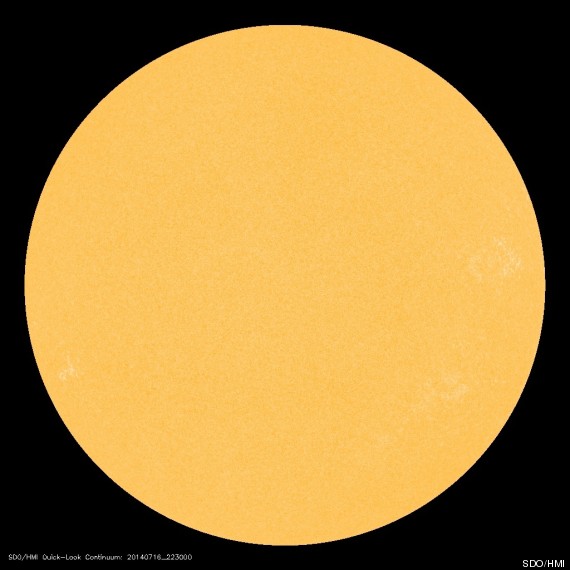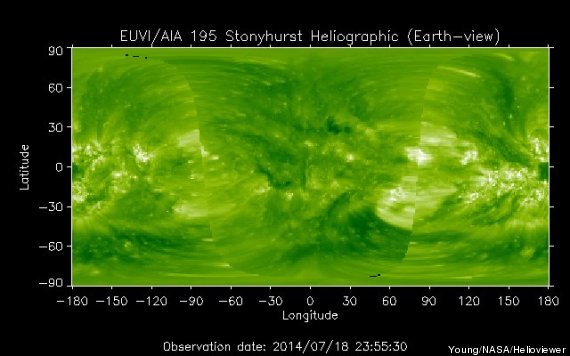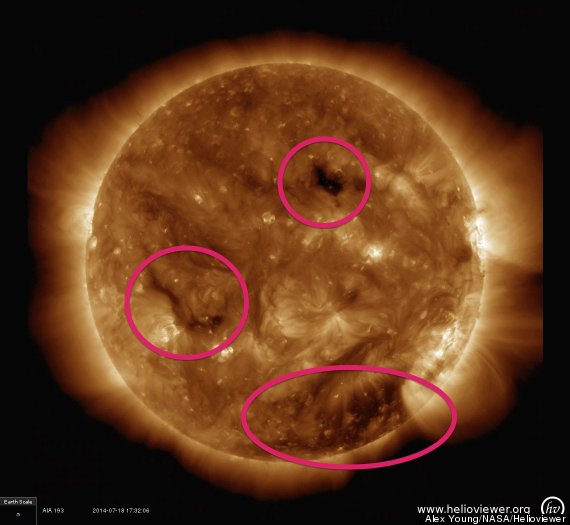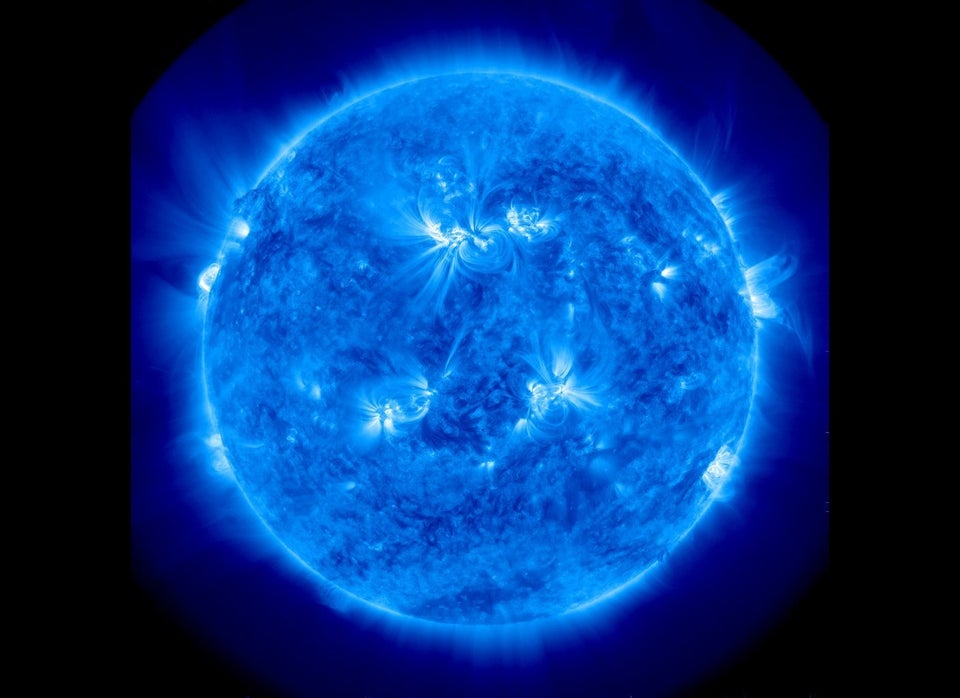Our sun erupted with activity, sported several sunspots and unleashed massive solar flares just last month in what scientists dubbed a "solar mini max." But now, the sun appears to have gone strangely quiet.
In fact, the side that faces us appeared spotless on July 17 for the first time in almost three years.
(Story continues below.)
An image of the "spotless sun" taken July 17, 2014 from NASA's Solar Dynamics Observatory.
That's a bit unusual, given that scientists believe the sun is in solar maximum, a period of peak activity during the sun's roughly 11-year solar cycle. The sun is currently in solar cycle No. 24, since scientists first started tracking sunspot variation in 1755.
"It is weird, but it's not super weird," solar physicist Tony Phillips wrote on his website, Spaceweather.com, according to the Los Angeles Times. "To have a spotless day during solar maximum is odd, but then again, this solar maximum we are in has been very wimpy."
Phillips first reported low solar activity on July 15, 2014. In days following, he noticed a continuing trend of few sunspots and low X-ray output, which he dubbed the "All Quiet Event."
This kind of behavior might be expected during the sun's solar minimum, its period of lowest activity. For instance, in 2008, during its last solar minimum, the sun went 266 days with no observable sunspots. But a sunspot-free day is uncommon during solar maximum.
Is this something to worry about? Probably not.
"Activity comes in bursts and is not continuous," Alex Young, associate director for science in the Heliophysics Science Division at NASA's Goddard Space Flight Center, told The Huffington Post in an email. "So even during a very active or strong hurricane season there are not always continuous hurricanes. There are often times of no hurricanes but that doesn’t mean we would call the hurricane season quiet or calm. And also with the sun."
And, he added, while the sun may look calm on the side we can see from Earth, that doesn't mean it's entirely void of activity.
"Only the side facing Earth is 'quiet,'" Young said in the email. "We are so used to thinking only about the side of the sun facing Earth but since the launch of the STEREO spacecraft we see the entire sun and there is activity that we can’t see from Earth."
Spacecraft like STEREO and NASA's Solar Dynamics Observatory capture other angles of the sun, detecting solar activity that can only be seen in extreme ultraviolet wavelengths. And recent images suggest that the sun may not have gone "all quiet" after all.

This map of the extreme ultraviolet sun was made by combining data from the Solar Dynamics Observatory (center part of the map) and STEREO A on the right and STEREO B on the left. The bright white patches in the image indicate areas over sunspots called "active regions."
According to Young, these images taken by spacecraft during the "All Quiet Event" reveal the sun has continued firing off solar flares (intense bursts of light) and coronal mass ejections (blasts of solar material).

The image from July 18 shows dark regions called coronal holes and high speed streams of solar wind (particles of the sun), which can produce both aurora and geomagnetic storms here on Earth.
He said that in the future, scientists should have a better sense of what kind of solar activity is truly unusual.
"We've only been observing the sun in lots of detail in the last 50 years," Young told the LA Times. "That's not that long considering it's been around for 4.5 billion years."
